Mad Dogs and Englishmen With Long Legs
 In celebration of socks today, I bring you Sir Raymond Longlegs. I know you have never heard of him, but it doesn’t actually matter who Sir Raymond was. What matters is that this is an amusing remnant of my past that I came across last week. It made me giggle so much as I remembered how an old flatmate and I so marvelled at Sir Raymond’s excessively long legs that we had to celebrate the fact by pinning him to the wall. I snapped a photo of it and sent it to her friend with the question, “Do you remember him?” She certainly did. Really, how could one forget?
In celebration of socks today, I bring you Sir Raymond Longlegs. I know you have never heard of him, but it doesn’t actually matter who Sir Raymond was. What matters is that this is an amusing remnant of my past that I came across last week. It made me giggle so much as I remembered how an old flatmate and I so marvelled at Sir Raymond’s excessively long legs that we had to celebrate the fact by pinning him to the wall. I snapped a photo of it and sent it to her friend with the question, “Do you remember him?” She certainly did. Really, how could one forget?
Pom-Tiddly-Pom
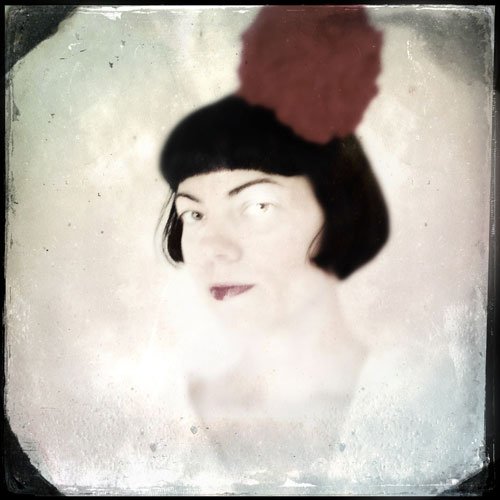 Pom-Tiddly-Pom :: Tinto1848 // C-Type Plate // No flash
Pom-Tiddly-Pom :: Tinto1848 // C-Type Plate // No flash
A Crafty Adventure
Yesterday I made a pompom. It is red, and it is enormous. And it is made to sit on the head. I figured, if one is going to wear a pompom on the head, it may as well be huge and make a statement. After all, all sorts of oversize headpieces have been in the fashion news in the last year: rabbit ears, bows, and giant pieces of fruit, so why be shy? Being a wallflower never got anyone anywhere.
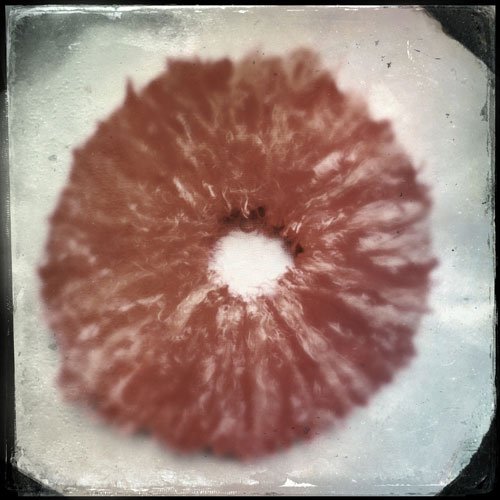 Round and Round She Goes :: Tinto1848 // C-Type Plate // No flashIt is very easy to make a pompom. Cut two circles out of cardboard. Cut smaller circles in the middle. Wind yarn round and round and round (finishing with the end on the outside edge). Make it fat.
Round and Round She Goes :: Tinto1848 // C-Type Plate // No flashIt is very easy to make a pompom. Cut two circles out of cardboard. Cut smaller circles in the middle. Wind yarn round and round and round (finishing with the end on the outside edge). Make it fat.
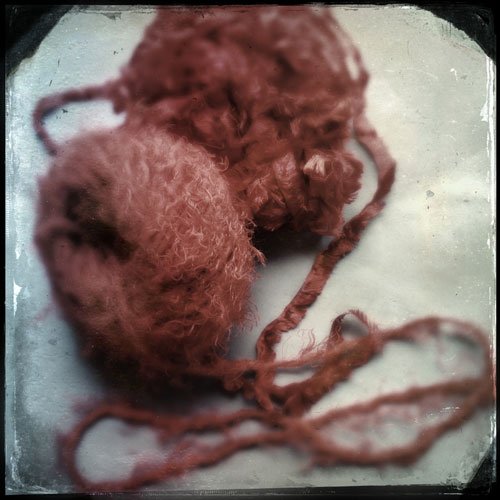 Flutter and Entice :: Tinto1848 // C-Type Plate // No flashTo clarify: for thick yarn wind 4–5 times around; for thin, 8–9 times. I preferred to err on the side of caution, for though I was using two types of yarn, they were both quite skimpy. I used both skeins entirely. (Note these yarns are both a true pillar-box red; the C-Type plate film is quite deceptive.)
Flutter and Entice :: Tinto1848 // C-Type Plate // No flashTo clarify: for thick yarn wind 4–5 times around; for thin, 8–9 times. I preferred to err on the side of caution, for though I was using two types of yarn, they were both quite skimpy. I used both skeins entirely. (Note these yarns are both a true pillar-box red; the C-Type plate film is quite deceptive.)
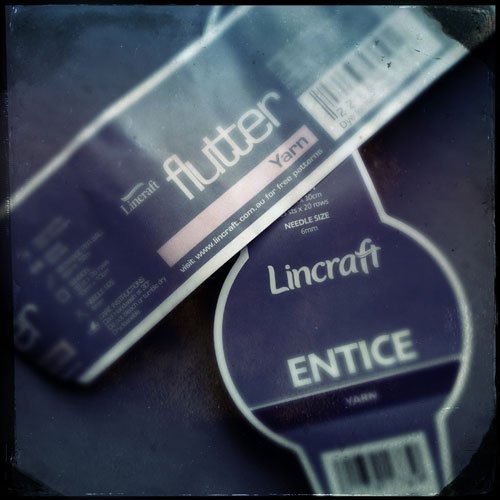 Lincraft Yarn :: Tinto1848 // C-Type Plate // No flashI wanted my pompom to be very thick and dense, and had specifically chosen yarns with texture and character. Originally I wanted chenille, but could not actually find any to purchase. These yarns are both acrylic, but are very soft to the touch – one kinda hairy (Entice), the other something like a very fine fringe (Flutter).
Lincraft Yarn :: Tinto1848 // C-Type Plate // No flashI wanted my pompom to be very thick and dense, and had specifically chosen yarns with texture and character. Originally I wanted chenille, but could not actually find any to purchase. These yarns are both acrylic, but are very soft to the touch – one kinda hairy (Entice), the other something like a very fine fringe (Flutter).
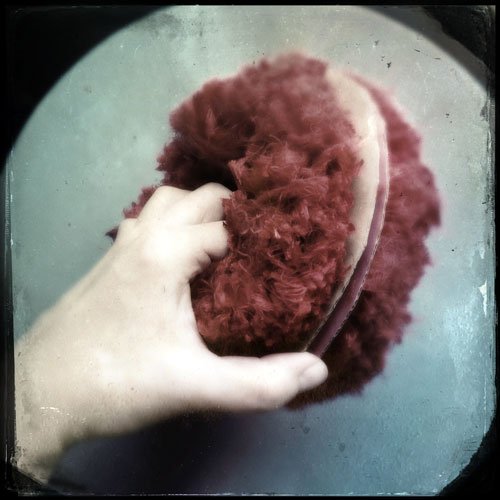 Pompom Flavoured Donut :: Tinto1848 // C-Type Plate // No flashCut all around the edges, slipping the blades of your scissors between the two pieces of cardboard. You will end up with a fat donut. Insert a piece of yarn between the circles, wind and knot tightly.
Pompom Flavoured Donut :: Tinto1848 // C-Type Plate // No flashCut all around the edges, slipping the blades of your scissors between the two pieces of cardboard. You will end up with a fat donut. Insert a piece of yarn between the circles, wind and knot tightly.
 Peppermint Sticks :: Tinto1848 // C-Type Plate // No flashBecause I intended to attach my pompom to a headband and wanted something stiff to support it, I also tied it with a chenille pipecleaner. I found some very charming peppermint stick types in a two-dollar shop – for $2, in fact.
Peppermint Sticks :: Tinto1848 // C-Type Plate // No flashBecause I intended to attach my pompom to a headband and wanted something stiff to support it, I also tied it with a chenille pipecleaner. I found some very charming peppermint stick types in a two-dollar shop – for $2, in fact.
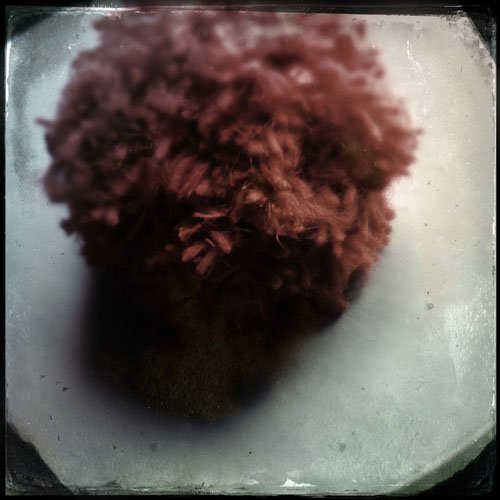 Pompom :: Tinto1848 // C-Type Plate // No flashOnce the pompom is tied-off, I plumped it up and trimmed all the sticky-outy ends. By nature of the type of yarn I used it will probably always look raggedy, although I am quite pleased with this aspect; too uniform is boring. I love it – it is so nice and plump and has a lovely weight.
Pompom :: Tinto1848 // C-Type Plate // No flashOnce the pompom is tied-off, I plumped it up and trimmed all the sticky-outy ends. By nature of the type of yarn I used it will probably always look raggedy, although I am quite pleased with this aspect; too uniform is boring. I love it – it is so nice and plump and has a lovely weight.
 The Biggest Pompom :: Tinto1848 // C-Type Plate // No flashI twisted the ends of the pipecleaners around a black satin-covered headband to attach the pompom, and voila! Wearing it today however I discover it is heavy enough that I must keep my head upright or the headband slips forward under the weight of the pompom. This actually does wonders for my posture, which is undoubtedly a good thing, but it would probably be worth considering using a wider headband as a base.
The Biggest Pompom :: Tinto1848 // C-Type Plate // No flashI twisted the ends of the pipecleaners around a black satin-covered headband to attach the pompom, and voila! Wearing it today however I discover it is heavy enough that I must keep my head upright or the headband slips forward under the weight of the pompom. This actually does wonders for my posture, which is undoubtedly a good thing, but it would probably be worth considering using a wider headband as a base.
Heart Transfer
 Laser print transfer to glassine paper (the background is an old potato print) – both coincidentally use a heart motif.I’ve been working on collages recently utilising found paper, ink drawings and thread. A few years ago I had been working in a similar vein with laser-printed tracing paper incorporated into my collage. I decided to revisit this method, but this time I wanted to use glassine paper (that thin stuff between the pages of old-fashioned photo albums – you remember hard-copy albums, right?).
Laser print transfer to glassine paper (the background is an old potato print) – both coincidentally use a heart motif.I’ve been working on collages recently utilising found paper, ink drawings and thread. A few years ago I had been working in a similar vein with laser-printed tracing paper incorporated into my collage. I decided to revisit this method, but this time I wanted to use glassine paper (that thin stuff between the pages of old-fashioned photo albums – you remember hard-copy albums, right?).
Glassine is too thin to go through a printer however, so alternative methods were called for. I also wanted something a little less hard-edged than a flat laser print. A transfer was the answer: a direct contact print onto a substrate. You can use many types of substrates, from art paper to fabric, wood, or metal, all with differing results.
 Nail polish remover, a cotton swab, a spoon – and the great outdoors.After researching transfer techniques and realising I had none of the proper materials (and being impatient to start), I decided to experiment with other mediums. Transferring requires using a carbon-heavy photocopy (the primitive type found in public libraries rather than the posh laser printers in offices) for best results, but I decided to give the laser print a go anyway. The fresher the print is, the better.
Nail polish remover, a cotton swab, a spoon – and the great outdoors.After researching transfer techniques and realising I had none of the proper materials (and being impatient to start), I decided to experiment with other mediums. Transferring requires using a carbon-heavy photocopy (the primitive type found in public libraries rather than the posh laser printers in offices) for best results, but I decided to give the laser print a go anyway. The fresher the print is, the better.
I didn’t have any oil of wintergreen either (or methyl salicylate if you want to be a show-off), so I decided to try acetone – or good old nail polish remover, something every respectable girl artist has in her pencil case. All else you need is a cotton swab, a spoon, and good ventilation so you don’t get sick and die from inhaling all the deadly fumes.
 Hey presto!I went out on the balcony armed with some ok quality illustration paper, my Sally Hanson nail polish remover, a Johnson & Johnson cotton tip, an old spoon left over from a photoshoot, and my fresh laser print of an old sketch of heart-bedecked trees. I placed the print upside down onto the paper and applied a little nail polish remover to the back. (The acetone will soak through the paper immediately, and become transparent.) Using the back of the spoon I burnished while the paper was still wet, which meant going bit by bit, as the print won’t transfer after the acetone dries.
Hey presto!I went out on the balcony armed with some ok quality illustration paper, my Sally Hanson nail polish remover, a Johnson & Johnson cotton tip, an old spoon left over from a photoshoot, and my fresh laser print of an old sketch of heart-bedecked trees. I placed the print upside down onto the paper and applied a little nail polish remover to the back. (The acetone will soak through the paper immediately, and become transparent.) Using the back of the spoon I burnished while the paper was still wet, which meant going bit by bit, as the print won’t transfer after the acetone dries.
It was like magic! The print was smudge-proof too. I immediately attempted a transfer onto the glassine – with poorer results unfortunately. The transfer was patchy, with lines that had bled a little, but perhaps in my excitement I was more careless with my burnishing. A friend has since kindly supplied me with some very pungent-smelling oil of wintergreen, so I’ll be playing with the real thing this weekend.
 A transfer onto Canson 250gsm illustration paper was much more successful than those made using the glassine substrate.
A transfer onto Canson 250gsm illustration paper was much more successful than those made using the glassine substrate.
The Naked Lunch
 Le petit déjeuner sur l’herbe, Édouard Manet, 1863Somewhere in the world it’s lunchtime right now. If it is, may I suggest you honour Édouard Manet on his birthday and eat it al fresco in your birthday suit?
Le petit déjeuner sur l’herbe, Édouard Manet, 1863Somewhere in the world it’s lunchtime right now. If it is, may I suggest you honour Édouard Manet on his birthday and eat it al fresco in your birthday suit?
 Édouard Manet, portrait by Nadar, 1874The French painter was born today in 1832 (d. 1883), and he was one of the first artists to begin to veer away from pure realism, paving the way for the Impressionists. His work marks the beginning of modern art, in particular his paintings Le déjeuner sur l’herbe (1863) and Olympia (1863). Both the naked lunch and Olympia caused great controversy in their day, mostly for their connotations of sexuality and prostitution.
Édouard Manet, portrait by Nadar, 1874The French painter was born today in 1832 (d. 1883), and he was one of the first artists to begin to veer away from pure realism, paving the way for the Impressionists. His work marks the beginning of modern art, in particular his paintings Le déjeuner sur l’herbe (1863) and Olympia (1863). Both the naked lunch and Olympia caused great controversy in their day, mostly for their connotations of sexuality and prostitution.
These four pictures I have included have always been my favourite paintings of his, although I also like some of his boating subjects. I particularly remember my high school art teacher pointing out the noses of the ladies on The Balcony (1869), how in the brilliant sunshine they lost all form and are defined only by the shadows underneath – apparently this was another shocking thing for Manet’s contemporaries to come to terms with.
 Olympia, 1863
Olympia, 1863 The Balcony, 1869It is A Bar at the Folies Bergere (1882) that is my favourite however. There is such richness of detail and colour. It always held my fascinated gaze for long moments, my eyes wandering over the barmaid’s resigned expression and all the paraphernalia on the marble bench. I’m not forgetting the reflection of the man before her, but it is easy to do so because the distance suggested by the reflection does not quite tally with our viewpoint. It seems as though we ought to be peering over his shoulder. Some conjectures suggest this is not a mirror image at all, although none of these explanations satisfy. Perhaps Manet was simply taking some artistic licence and indulging in some painterly smoke and mirrors.
The Balcony, 1869It is A Bar at the Folies Bergere (1882) that is my favourite however. There is such richness of detail and colour. It always held my fascinated gaze for long moments, my eyes wandering over the barmaid’s resigned expression and all the paraphernalia on the marble bench. I’m not forgetting the reflection of the man before her, but it is easy to do so because the distance suggested by the reflection does not quite tally with our viewpoint. It seems as though we ought to be peering over his shoulder. Some conjectures suggest this is not a mirror image at all, although none of these explanations satisfy. Perhaps Manet was simply taking some artistic licence and indulging in some painterly smoke and mirrors.
 Manet’s last great painting, A Bar at the Folies-Bergere, 1882
Manet’s last great painting, A Bar at the Folies-Bergere, 1882
Twelve for 12
 Flight :: Wonder // W40 // No flashTwelve for 12 is a gallery of twelve favourite photos celebrating last year, one from each month. I anticipated it would be difficult to choose only twelve pictures, and it was, but I was surprised that there were two or three months when I did not take very many photos. I can only surmise that I must have been holed up at home, working.
Flight :: Wonder // W40 // No flashTwelve for 12 is a gallery of twelve favourite photos celebrating last year, one from each month. I anticipated it would be difficult to choose only twelve pictures, and it was, but I was surprised that there were two or three months when I did not take very many photos. I can only surmise that I must have been holed up at home, working.
January is for my cat of sixteen years, Hero. She is so cosily curled up one of her favourite places, on one of my grandmother’s pillows brought from Yugoslavia decades ago. I was only to have three more months with Hero before she left me for the Great Meadow In The Sky, a devastating farewell.
March was a particularly difficult month to narrow down, as I went on three trips: a beach weekend with my sisters, a gallery-hopping trip to Sydney, and a beach holiday in north Queensland.
And December brought the new Hipstamatic Tintotype pak, one of my favourite sets of equipment for its olde-worlde look based on the tintype cameras of the mid-nineteenth century. So many photos to choose from in December!
Click to view the Twelve for 12 Hipstagallery.


